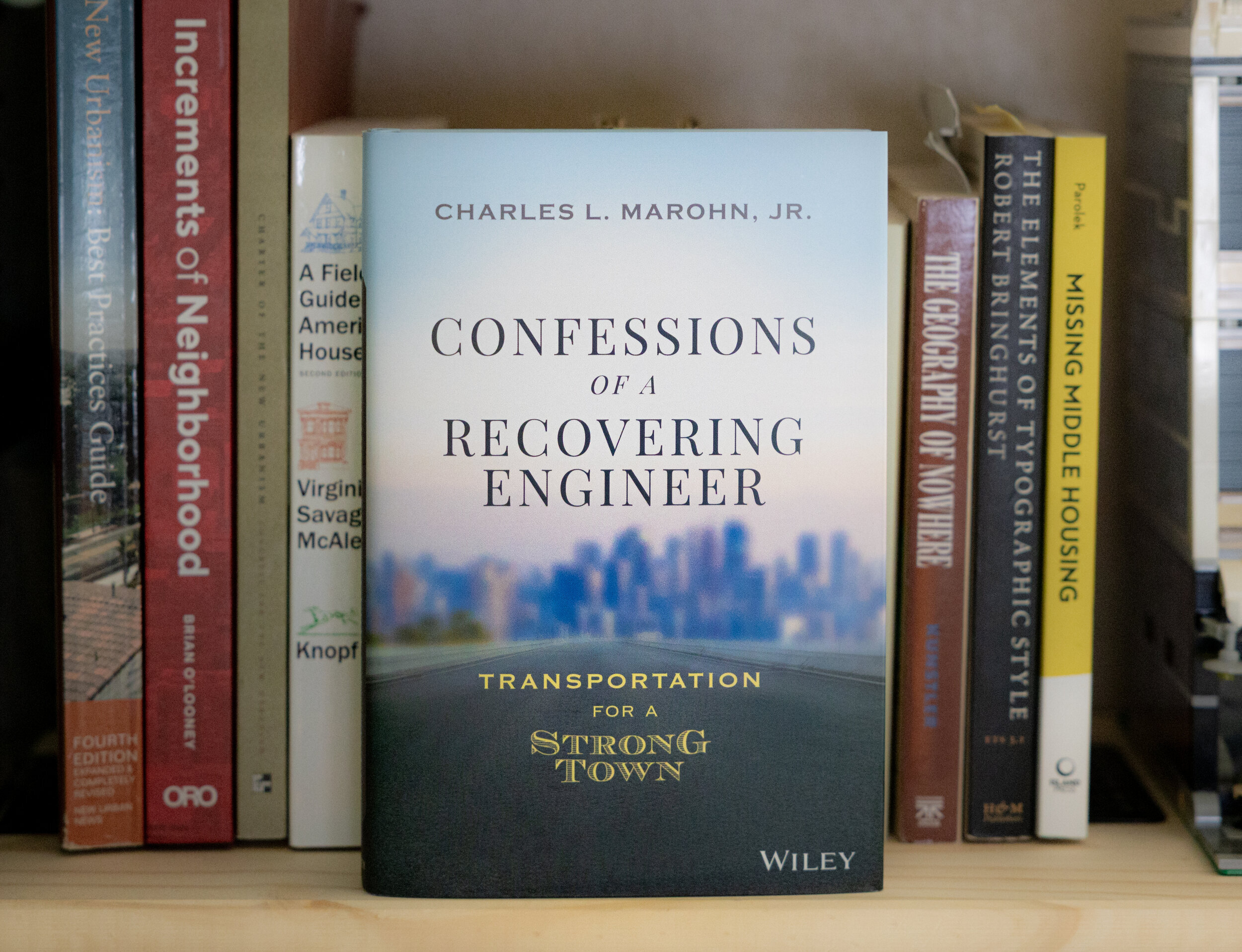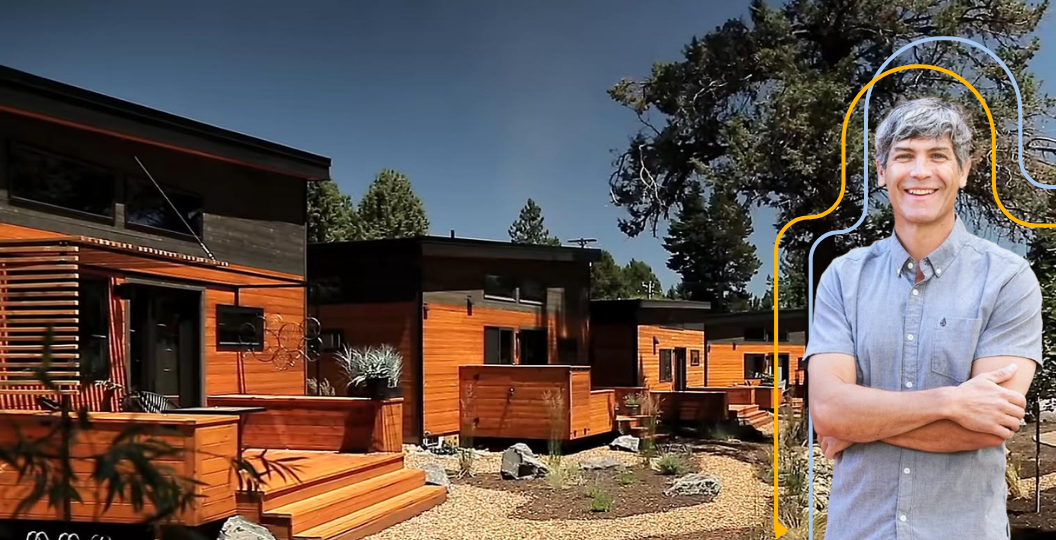Confessions of (Another) Recovering Engineer
This article was originally published by Strong Towns member Kevin Shepherd at Verdunity. It is shared here (in slightly modified format) with permission. All images for this piece were provided by the author. You can connect with Kevin Shepherd on Twitter at @k_shepherd, and check out his podcast, Go Cultivate!
My friend, peer, and mentor of sorts, Chuck Marohn, has just released his second book, entitled Confessions of a Recovering Engineer: Transportation for a Strong Town. As a recovering engineer myself who has been inspired by Chuck’s work for over a decade, I thought this would be a good time to provide my own confessions in hopes that more engineers will be inspired to make the shift that Chuck and I have. So, here we go...
Prosperity doesn’t come from endless new growth and expansion. It’s cultivated through incrementally investing in improvements to neighborhoods and infrastructure, respecting nature, and building places that prioritize people, place, and relationships over cars.
Historic societies and older countries knew this. If you’ve ever visited Europe, you’ll see this in the narrow streets, extensive cycling and public transit facilities, numerous public plazas and green spaces, diverse (and high quality) architecture, and neighborhoods that integrate different housing types, businesses, and other uses. You’ll even see fire trucks and delivery vehicles that are smaller—designed to work within the street and community design. Here in the United States, we started off on the right track, building our towns around a courthouse square or a few blocks of Main Street. In the 1950s, the combination of post-WWII housing policies and the invention of the automobile led to abandonment of this proven, incremental approach for the “Suburban Experiment,” where cities and developers rapidly built millions of new single family homes over thousands of acres and marketed it as the American Dream.
Seventy years later, we’re finding there’s a problem with this approach: We’ve built cities we can’t afford to live in or maintain. Certain types of development patterns produce surplus revenues for cities, enabling them to invest in incremental improvements to infrastructure, public spaces, and other things that preserve and enhance quality of life for residents. Other patterns cost significantly more to serve than what they produce in revenue, creating a resource gap between the services residents expect and the revenue cities have to adequately fund public safety, infrastructure maintenance, parks, and other needs. The historic, or traditional way of building cities is the former. The suburban model the United States has embraced is the latter. Google “infrastructure funding” and you’ll see pages of articles discussing how much money our cities and states need to maintain our roads, bridges, utilities, and drainage systems. There’s a reason we haven’t come up with the money already. We simply can’t afford it.
Some team of engineers, somewhere, thought this was the right move.
Fiscal health and affordability for residents/tax payers are directly connected to land use. Land use, neighborhood experience, and transportation are also connected. And finally, how we design our transportation systems impacts the fiscal health of our communities, and the quality of life and cost of living for residents. To my fellow engineers out there, we’re doing it all wrong.
These are not things I was taught in college as a civil engineering major. My project managers and mentors early in my career as a consulting engineer did not mention them either, instead teaching and encouraging me to apply industry adopted design standards such as the AASHTO “Green Book,” the Manual on Uniform Traffic Control Devices (MUTCD), and various city and state DOT standards. I was interested in civil engineering as a way to partner with cities and residents to solve problems and build great communities, but what engineering actually turned out to be was the exact opposite of what I was hoping to do. I spent the first 16 years of my career as a licensed civil engineer working on municipal infrastructure and site development projects across Texas with a large A/E firm. Every day I would look things up in tables based on industry accepted practices, and then force these rigid standards into the design of roads and sites, often taking people’s property, filling in floodplains, and widening roadways to make them more safe (for drivers, not people—read Chuck’s book to learn more). I did this under my professional oath to “protect the health, safety, and welfare” of those people and communities I was serving. Looking back now, I can say that many projects I designed actually hurt people and their communities.
That’s quite the load to process, and it took me a combination of somewhat unique personal experiences (I’ve lived and traveled in Europe and multiple states) and a long time to figure it out. I’ve been contacted by a number of young engineers who are struggling with this and looking for guidance. In the rest of this “confession,” I’m going to share how I came to learn these things and how it’s impacted me, in hopes that it will encourage other engineers and community builders to read Chuck’s book and make the career shift that I did.
In 2009, I was offered the opportunity to serve as National Director of the firm's Community Planning and Urban Design practice, where I supported our team and clients on various plans, site development projects, and sustainability initiatives. As I traveled around, I began to see a trend emerging that no matter what type of city I visited—big or small, rural or urban or suburban, progressive or conservative—they were all struggling with how to pay for existing infrastructure, but continuing to build more. The more I visited with planners and studied development trends, I realized the development pattern and common transportation engineering practices were the primary causes of the funding gaps in cities. Yet, in my home region of Dallas–Fort Worth, we were not just implementing the same approaches these other places had, but were doing it at a much larger scale and faster pace.
The Strong Towns website, circa 2010.
Late one evening in 2010, I was on Google looking for information to help me get some clarity, and I found the Strong Towns blog. I read Chuck's posts religiously for a few months, and ended up reaching out to Chuck directly in 2011. Many of our early conversations were focused on the "Conversation with an Engineer" YouTube video and if/why/how engineers played a role in the fiscal issues facing our cities and country. I ended up leaving my big company job in April 2011 to start my own consulting firm, Verdunity, where we are focused on helping communities understand, communicate, and close their resource gap through Strong Towns-inspired planning, engineering, and engagement efforts. Chuck's personal advice, writing and outreach efforts played a huge role in inspiring me to make this leap, but also gave me some comfort knowing that I would have a solid resource to lean on to help explain, test, and improve concepts with our clients.
If you haven’t read it already, Chuck’s first book Strong Towns: A Bottom Up Revolution to Rebuild American Prosperity, is a great place to start. The new book digs deeper into why transportation engineers do what they do, why these values and practices are wrong, and ways to change. Many of the concepts in this book are things Chuck and I pondered in our first few years getting to know each other, and I can say that I not only agree with what he's written, but have my own similar examples to back them up. I don’t want to give away too much of what’s in the book, but a few key things Chuck writes about include:
Part of the recovery process: meeting people where they are. (A Verdunity Walkshop.)
How the priorities of the people in a community for designing roads differ from standard engineering values and practices.
The difference between a street, a road, and a stroad.
Explaining speed and travel time and how our community and roadway design impacts these.
How transportation projects are funded, why this encourages wasteful spending and poor design, and how to make better use of public and private resources.
Much like Chuck and Strong Towns, my perspective as a "recovering engineer" and Verdunity’s journey have evolved over the past decade as more people and places begin to better understand the challenges with infrastructure funding, transportation design, and community planning. Transportation planners and engineers have played a significant role in creating generic places that people can’t or don’t want to live in and reinvest in. We need our communities to make big changes to get back on the path to prosperity, and engineers play a huge role in how fast and effective the shift can be.
I'm proud to be a "recovering engineer," and look forward to Chuck’s latest book creating a new wave of transformation in the planning and engineering fields.







North Carolina’s I-26 Connector illustrates everything wrong with the way state DOTs operate—especially in an area still recovering from Hurricane Helene. But it also shows how these systems can change.